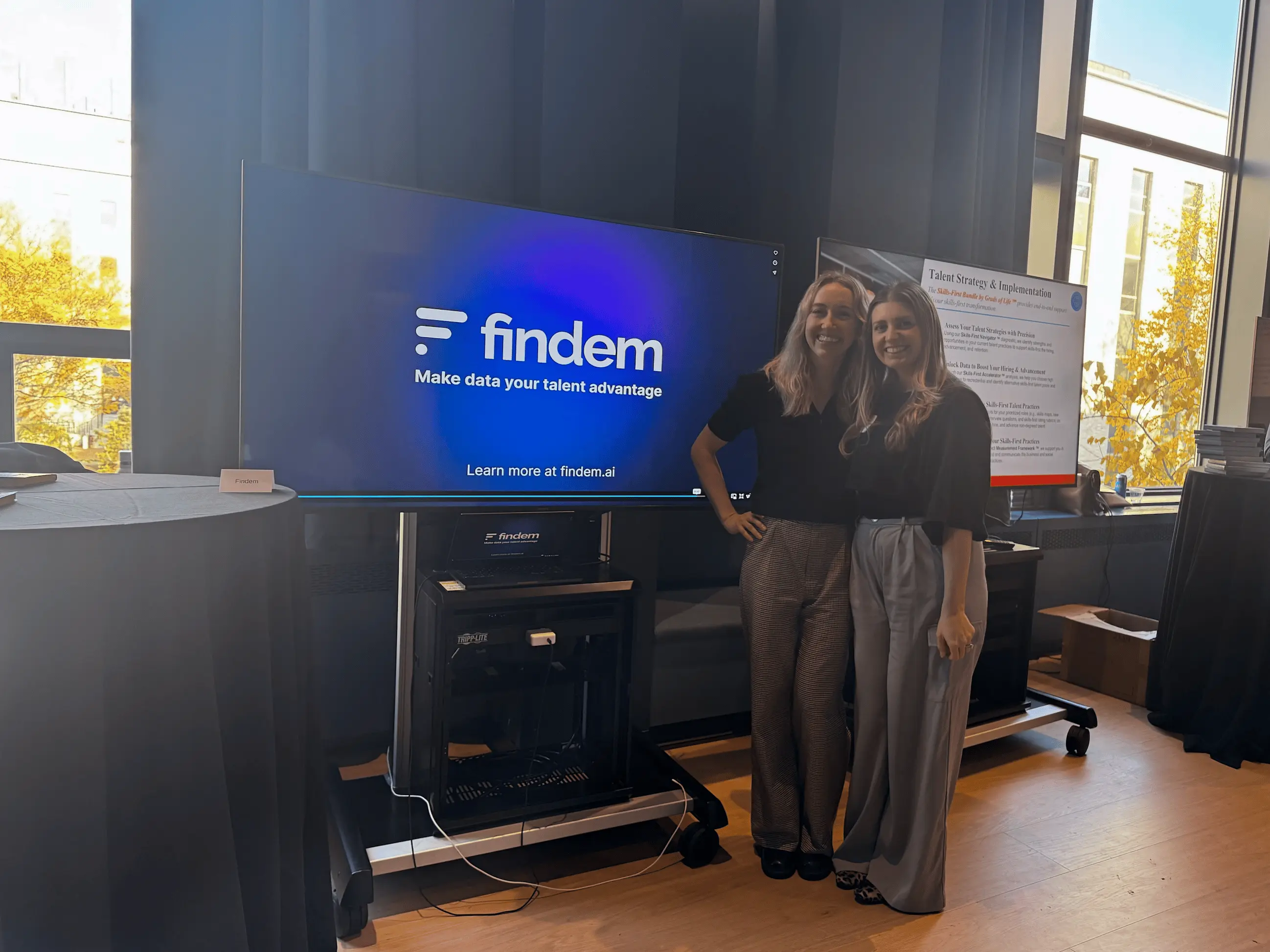.svg)
AI in the recruiting tech stack: 6 questions to ask vendors
.svg)

This blog addresses topics covered during our latest Findem Live on optimizing your talent workflow. Watch the replay for a full walkthrough of the benefits of a multichannel talent ecosystem.
The winds of change are blowing through the talent acquisition landscape. Talent leaders are questioning conventional approaches to talent acquisition, as well as the rigid, siloed systems that constrain the function. AI has the potential to unlock capabilities that simply didn’t exist a few years ago.
A strategic, multichannel talent ecosystem has the potential to bring automation and intelligence to your talent tech stack. But how do you evaluate vendors who all promise the latest and greatest innovations with AI?
Here are a few key areas to address and questions you should ask before moving forward with any vendor.
What data and functions are offered to consolidate across channels?
Do the hiring channels offered by the vendor align with your organization’s focus and goals? Take a look at your hiring over the last year to determine which channels are bringing in the most pipeline. Feel free to leverage this free ROI calculator to help you assess your channels.
If they’re coming from your inbound channels, for example, then you want to make sure the vendor’s capabilities can help you build on that channel and scale the rest of the ecosystem as your own talent acquisition goals change.
A platform that allows you to configure your channel mix provides the maximum agility for changing business goals and market conditions.
How long has the company been utilizing AI in practice?
AI isn’t just something you turn on and off. It’s a powerful tool that promises to transform workflows, but not without proper implementation. When assessing vendor capabilities, you should always verify that they’re testing, training, and developing effective AI processes in their systems.
Early adopters of today’s AI advancements have been reviewing newly-built solutions, only to find that the workflows are not as intuitive and the data not as accurate as expected.
Make sure the vendor can provide you with answers to how, why, and where they’re using AI to specifically increase data accuracy and the user experience. One bold question you might ask could be, “What learnings have you had when first rolling out your AI product?”
Where is your organization in its AI journey?
Questions related to change management and adoption will drive how quickly you can roll AI into your tech stack. Start by assessing the company's readiness to implement AI and if your team is ready to make changes to their processes and workflows. Has leadership been exploring or experimenting with AI tools like ChatGPT?
This all hinges on where change management starts at your organization — either above the line or below the line. For most companies, it’s both!
We’ve found in our own experience that most talent leaders see AI as the future, but teams aren’t necessarily ready to scale with the technology. For example, recruiters are compensated based on the number of candidates they place, but learning a new tool and workflow can temporarily slow them down in the short term.
Start with your recruiting workflows and look for tools that enhance or simplify. It’s about the user experience, not the AI to see team productivity gains, not just individual gains.
How often does the platform both update and enrich candidate profiles across channels?
Many platforms promise an “updating” feature for candidate profiles, but most of those updates are being generated from a single source. Do they go beyond traditional sources to capture additional skills, certifications, publications, or verified code from the rest of the internet?
A good question to ask vendors is what specific, relevant sources they’re using to enrich candidate profiles, beyond LinkedIn or your ATS. This functionality can save your team valuable research time. Findem 3D data refreshes and enriches profiles continuously, combining data from 100,000+ data sources.
On this same note, it’s important to understand how the vendor is using AI responsibly and how they’re adapting to ever-changing, state-level AI laws. While AI can make your team more efficient, it needs to be used in a way that adheres to security, compliance, and privacy policies.
What is on the vendor’s product roadmap to continue improving AI workflows?
Someday, AI won’t just be a nice-to-have feature in vendor solutions — it’ll simply be a part of them. The question won’t just be, “Do you have AI?,” but rather, “What business value does AI bring to your organization?”
Brett Coin, Findem's Chief of Talent Transformation, brings more than 20 years of experience to this commitment and approach. He recently wrote a blog on the transformative power of AI in talent acquisition.
The tool should be simple enough to overcome adoption issues. Furthermore, it should be able to connect and integrate with your current systems to ensure you can consolidate your tech stack.
Are you ready to build your own multichannel talent ecosystem?
There is a world where organizations can cut and in some cases remove their current sourcing spend entirely. We can get there with the help of AI, but not without asking the right questions and addressing any concerns we have before implementation.
If you’re ready to begin, our latest guide can help you optimize the 7 key hiring channels and create a continuous pipeline of talent. Use our checklist to shift toward a multichannel talent ecosystem today.










